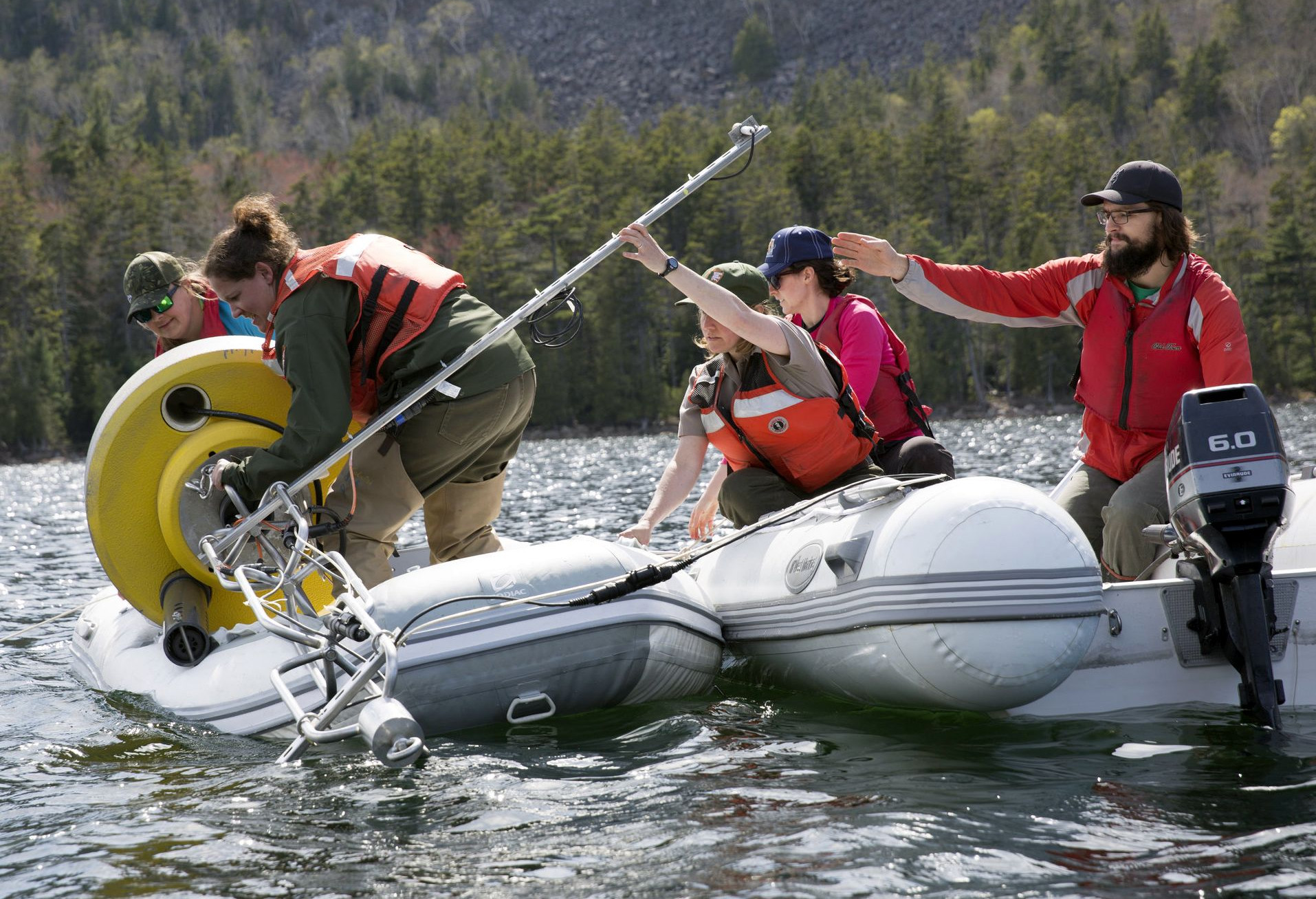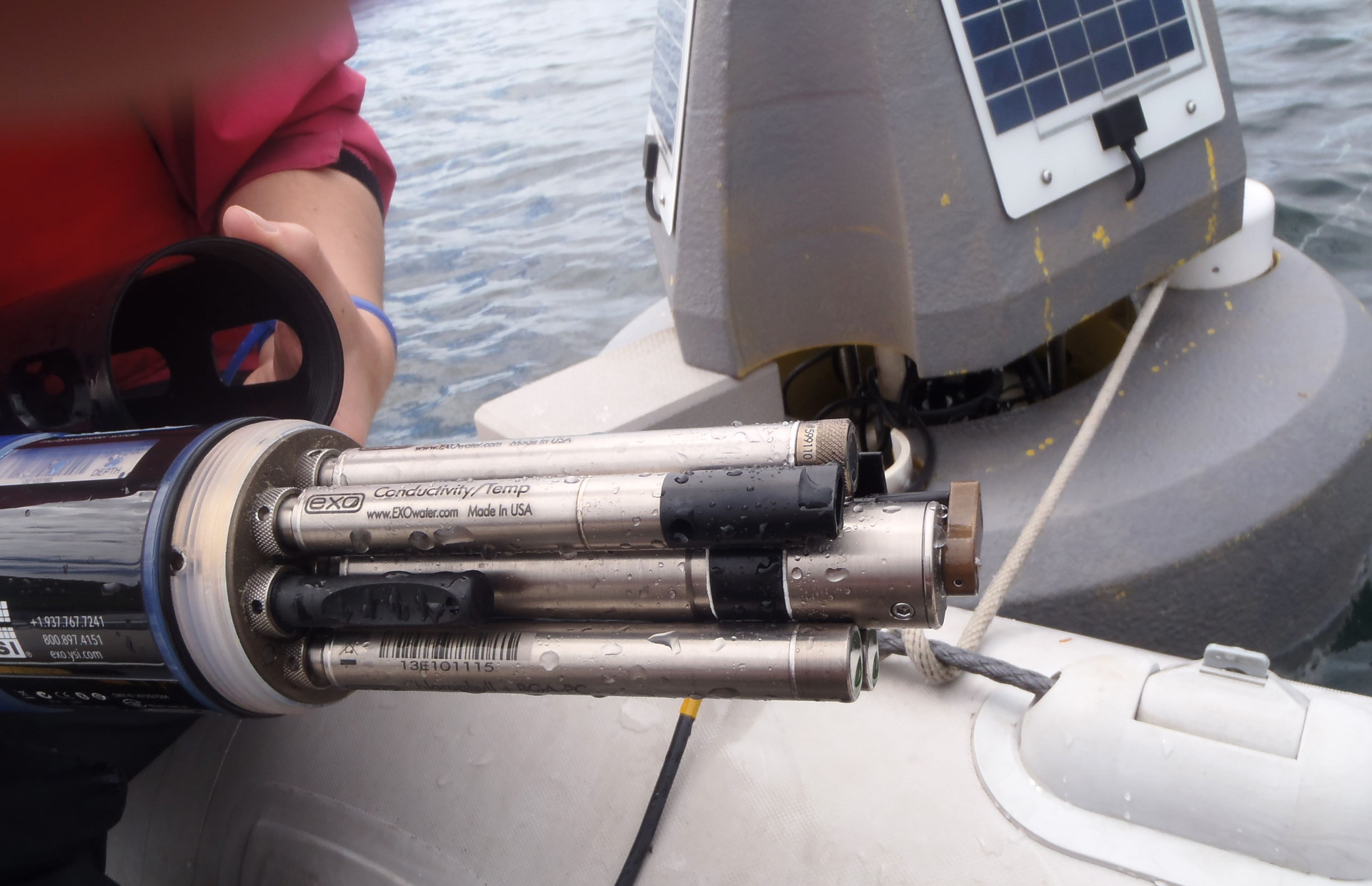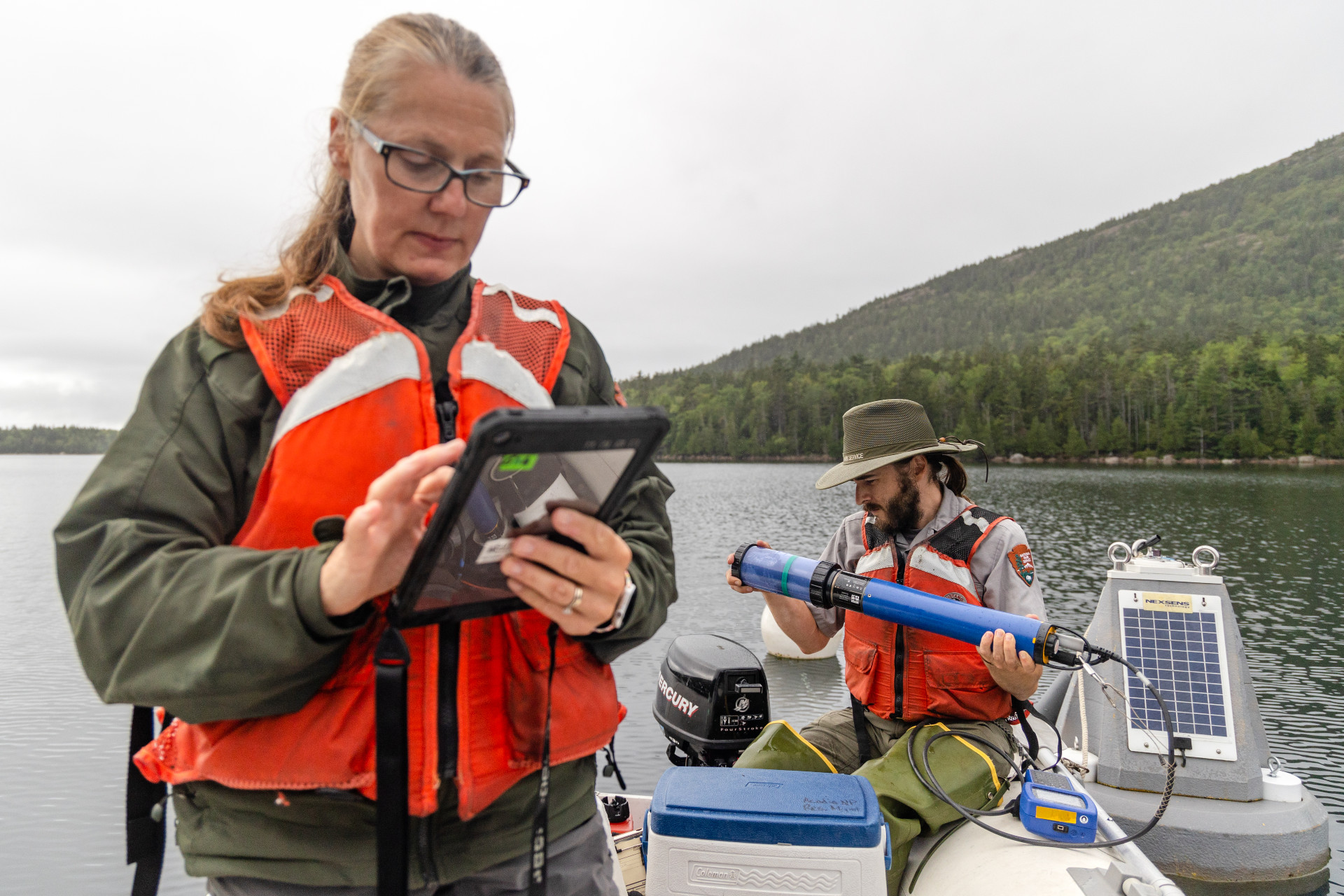The Monitoring Buoy in Jordan Pond Gathers Data that Helps Inform the Park’s Resource Protection Efforts
October 28th, 2022
October 28th, 2022

Acadia National Park staff and University of Maine researchers install a buoy that monitors water quality into Jordan Pond each spring. (Photo by Julia Walker Thomas/Friends of Acadia)
By BILL GAWLEY
Editor’s Note: This article is part of a series highlighting the Jordan Pond Water Quality Project and the monitoring buoy that continuously records physical and chemical conditions in the pond. The first article, “Diving Into Jordan Pond,” was published in the summer issue and provides an introduction to the project. Read the series at friendsofacadia.org/buoy

The thermal plot of Jordan Pond in 2021 demonstrates how the water warms throughout the
summer and creates temperature layers at various depths until the pond gradually cools in the fall, and the water mixes to a more uniform temperature. (Image courtesy NPS)
Every spring since 2013, a buoy is placed on its mooring at the deepest spot in Jordan Pond (over 150 feet!) as soon as possible after the lake ice clears. This is the same location from which scientists from Acadia National Park, Maine Department of Environmental Protection, the University of Maine, and others have been collecting data since the early 1980s.
The monitoring buoy is an informative tool for the Jordan Pond Water Quality Project, which is funded by Friends of Acadia and implemented by Acadia National Park’s Air-Water Resource team and researchers from the University of Maine’s Climate Change Institute.
The key advantage the buoy system has over previous monitoring efforts is that it collects readings every 15 minutes, day and night, until it is removed in early November.
The buoy’s high-resolution measurements show how some water quality conditions vary considerably over the course of a day and throughout the monitoring season, while others are surprisingly consistent.
Thanks to data collected at the same 15-minute intervals by the weather station on the Jordan Pond House, project staff are gaining a better understanding of how quickly and to what degree water conditions change in response to storms and seasonal weather patterns.
All these observations are used by park managers to aid in resource protection efforts for Jordan Pond and contribute to research efforts to determine how Maine lakes are responding to climate change and other global threats.

Close-up of underwater temperature sensor. The water quality sonde contains multiple sensors that
hang beneath the buoy at Jordan Pond. (Photo courtesy NPS)
Here are some details on the over 3,000 data points collected by the buoy each day:
• Tracking water temperature is key to understanding lake condition, since temperature affects water chemistry and can also determine the kinds of plants and animals found in a lake or pond. Warmer water holds less oxygen than cooler water, which leads to a natural oxygen decline during the summer months as water temperatures rise. This is why fish like brook trout retreat to the cool, deep water as the summer progresses. Algae grows more quickly in warmer temperatures.
• Jordan Pond’s water temperature is far from uniform for much of the year. Because of the pond’s depth, only the water near the surface warms to levels approaching the air temperature. The buoy has a string of temperature sensors reaching to 16 meters below the surface that record the temperature at each meter. The water below 16 meters rarely gets warmer than about 48° F even on the hottest summer day.
• About one meter below the surface, several other sensors measure oxygen, pH, specific conductance, total algae, and organic matter. Each of these measurements provides information on the overall health of the lake and how it is affected by external factors like weather and air pollution.
Each of these water quality metrics has an interesting story to tell and recognizing how they interact with one another and react to annual and seasonal weather variation and extreme events opens the door to understanding how this complex ecosystem functions.

Acadia National Park Physical Science Technicians Brenda Pizer (left) and Jake Van Gorder (right) conduct monthly water quality tests at the buoy. (Photo by Sam Mallon/Friends of Acadia)
Learn more about the monitoring buoy in Jordan Pond with Acadia National Park's Bill Gawley
In the next issue, we’ll share more of what we’ve learned through the project and what clues this information provides about the history and future of Jordan Pond.
BILL GAWLEY manages the Air and Water Resources program at Acadia National Park.